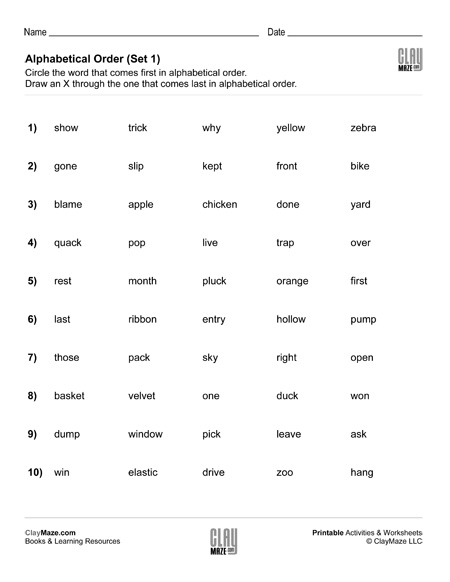In this worksheet, the student is asked to find the first and last words in alphabetical order for each group of words. There are five words in each group.
This one is a fairly basic exercise in alphabetizing – each word per group starts with a different letter.
Download Printable PDF
